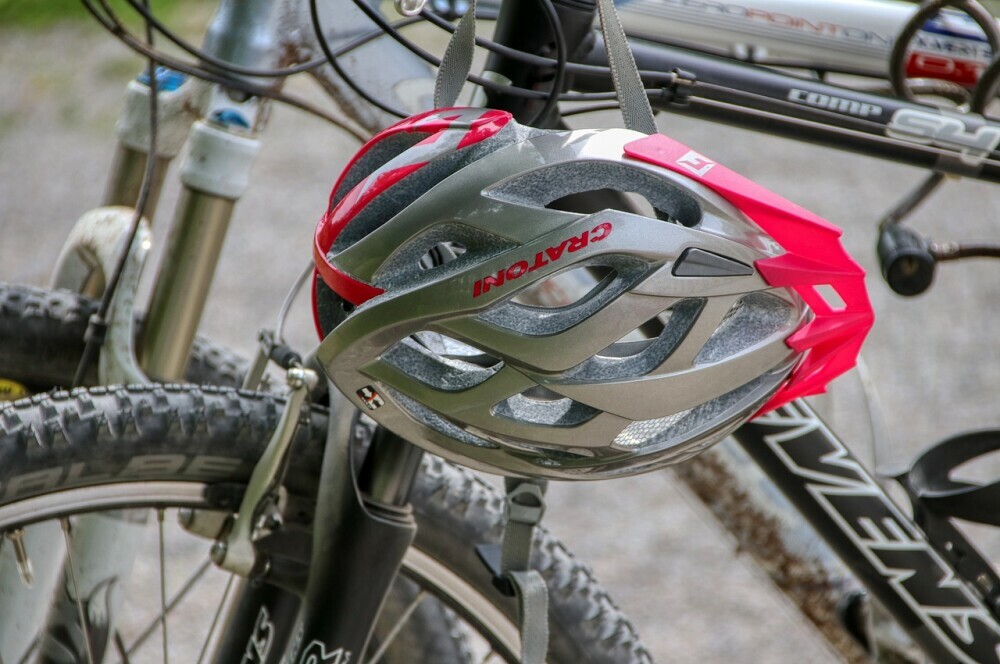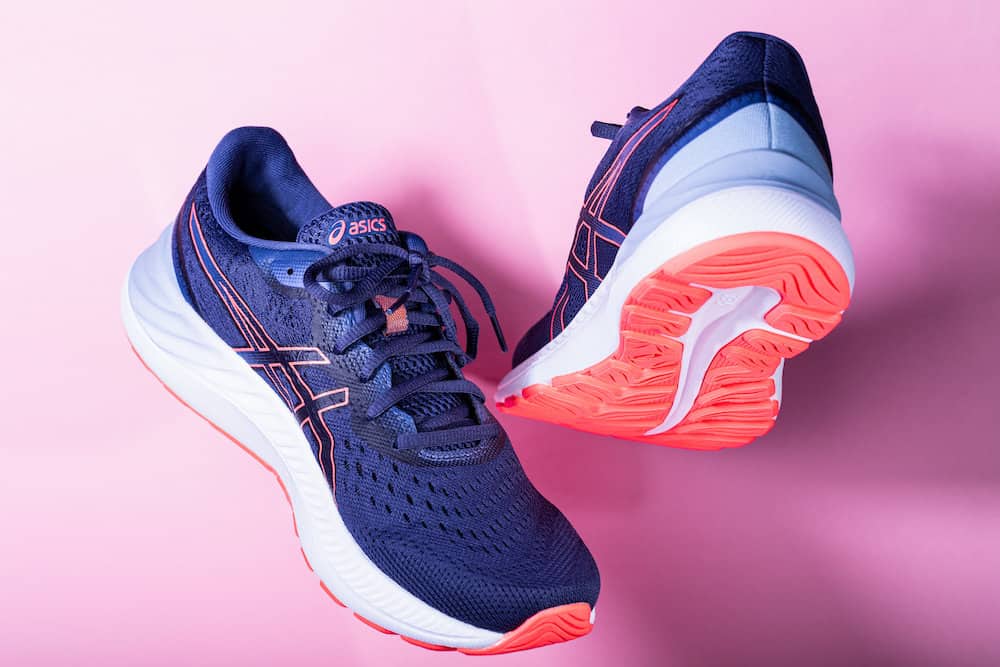Bike helmets are meticulously designed to provide optimal safety and impact resistance while maintaining comfort and functionality. We know that already, right? But what are bike helmets made of? Manufacturers employ a variety of materials and technologies to achieve balance.
In this article, we will discuss the materials commonly used in the construction of bike helmets. By understanding what bike helmets are made of, you will gain valuable insights into the factors that contribute to their protective capabilities. So let’s get started.
The Primary Components of Bike Helmets
The Outer Shell
The outer shell shields against external forces. Helmet shells are commonly made from 3 materials. Polycarbonate, carbon fiber, and fiberglass, or their combination. Each material has its pros and cons.
Let’s analyze this concept further:
Polycarbonate
Polycarbonate is a thermoplastic material popular for its exceptional impact resistance, high strength, and clarity. Polycarbonates are made through the polymerization process, in which bisphenol A (BPA) and phosgene react to form polycarbonate resin. The resulting material has a high glass transition temperature, making it tough and suitable for helmet shell applications.
The material is rigid and impact-resistant because Polycarbonate molecules are composed of repeating carbonate groups. This chemical structure also makes it amorphous and hence able to absorb and distribute energy across the entire shell. In addition, polycarbonates have relatively good UV resistance.
Some polycarbonates are injected with anti-UV components during manufacture to further enhance this feature. Such helmets are not affected by exposure to sunlight and they offer long-lasting protection against sunlight-induced degradation.
Just like most polymers (plastics), polycarbonates are cheaper and therefore great for the manufacture of low-cost bike helmets.

Carbon Fiber
Carbon fiber is a lightweight and ultra-strong material made up of carbon atoms fibers. Their manufacturing process involves heating precursor materials, such as polyacrylonitrile (PAN) or other organic fibers, to high temperatures, resulting in carbonization and graphitization.
Carbon fiber exhibits high stiffness and tensile strength-to-weight ratios, making it an ideal choice for applications where weight reduction and strength are essential. Carbon fiber provides excellent impact resistance and structural integrity to enhance head protection when used in helmet outer shells. Its ability to withstand high forces while remaining lightweight is greatly valued in performance-oriented helmets.
Carbon fiber is generally considered to be a more expensive material. Its cost can be attributed to several factors, including:
· Expensive raw materials: materials such as precursor fibers or raw carbon strands used to produce carbon fiber are typically more expensive than say polycarbonate materials.
· Intensive production process: The production of carbon fiber involves sophisticated and energy-intensive processes, including carbonization and graphitization. The raw materials undergo several complex steps, including heat treatment and chemical processes. It also requires specialized equipment, controlled environments, and skilled technicians, all of which contribute to the overall high manufacturing cost.
· Limited supply: The production capacity of carbon fiber is relatively limited compared to other materials, yet its demand is on the rise. This limited supply can also contribute to its higher cost in the market. The demand for carbon fiber in industries like aerospace, automotive, and sporting goods further contributes to its cost.
However, advancements in technology might eventually lead to significant cost reductions in carbon fiber production in the future. Carbon fiber is often used in industries where its exceptional properties justify the higher cost, such as in high-performance sports equipment, aerospace components, or high-end automotive applications.
Fiberglass
Fiberglass is a composite material composed of delicate glass fibers embedded within a polymer matrix, usually made of polyester or epoxy resin. The production of fiberglass involves the creation of glass strands, which are formed by pulling molten glass through fine spinnerets. These individual strands are then intricately woven together, forming mats or fabrics that serve as the foundation of the fiberglass material.
The glass fibers provide strength and rigidity, while the polymer matrix binds them together and enhances impact resistance. Fiberglass offers good thermal insulation properties, is resistant to corrosion, and provides decent impact resistance for helmet shell applications. It is also cost-effective compared to materials like carbon fiber.
The specific choice of outer shell material depends on factors such as cost, performance requirements, and manufacturing capabilities. Helmet manufacturers may also incorporate hybrid constructions, combining multiple materials to achieve a balance of factors like strength, weight, and cost-effectiveness. Remember, the outer shell serves as the first line of defense, safeguarding against external forces and impacts
Inner Foam
The foam cushions the head by absorbing and distributing destructive impact forces. Most bike helmet foam is made of EPS (Expanded Polystyrene). EPS foam is a lightweight, closed-cell foam made from expanded polystyrene beads. During manufacturing, polystyrene beads are first shredded into tiny particles. Then expanded in volume using steam before being injected under pressure into their respective helmet molds. The result is a cellular structure with tiny air pockets.
Scientifically, EPS foam absorbs and disperses the energy generated during impacts. Think of it this way, when a force is applied, the foam compresses, and the air pockets within the foam collapse, dissipating the energy and reducing the force transmitted to the head. This impact-absorbing property helps mitigate potential head injuries.
In addition, EPS foam also exhibits excellent thermal insulation properties while maintaining its lightweight characteristics. These features contribute to the foam’s ability to protect against both high and low-energy impacts while providing comfort.
Other Additional Materials
In addition to the shell and foam, a bike helmet will have additional parts tailored to enhance comfort, fit, and functionality as discussed below:
Comfort Padding
Most bike helmets often include additional padding, usually made of soft, moisture-wicking materials such as polyester or nylon fabric. The padding enhances comfort, reduces friction, and absorbs sweat. It also provides a cushioning effect on contact points between the helmet and the wearer’s head. By conforming to the wearer’s head shape and distributing pressure evenly, padding contributes to a snug and comfortable fit. It also minimizes potential discomfort during extended wear and enhances the overall helmet-wearing experience.
Helmet Retention Systems
Retention systems, which typically include straps and a dial or fastening mechanism, are essential for securing the helmet firmly on the wearer’s head. The straps are typically made of materials like nylon or polyester webbing, which provide strength and durability. Dials and buckles are made of a strong polymer material.
All these work in tandem to ensure a snug and secure fit by distributing the contact forces across the head. This helps reduce movement or rotation of the helmet during impacts, maximizing protection. Moreover, most straps are adjustable to accommodate various head sizes and shapes, allowing for personalized and secure fitting.

Visor
Just like the shell, helmet visors are commonly made from polycarbonate material. Compared to many other thermoplastic materials, polycarbonate has superior impact resistance. When a force is applied to the visor, polycarbonate molecules within the material distribute the energy of the impact throughout the structure. This property enables the visor to withstand significant external forces, protecting the wearer’s face and eyes.
In addition, Polycarbonate offers high optical clarity, which allows for unobstructed visibility through the visor. Its low refractive index and absence of unwanted coloration enable clear vision, essential for safety and performance during cycling.
Furthermore, the flexibility of polycarbonate makes it suitable for shaping into curved visors that conform to the contours of the helmet and provide a wide field of view. This flexibility allows for customization, allowing manufacturers to design visors that meet specific helmet styles and requirements.
It’s worth noting that other materials, such as acrylic or other types of plastics, may also be used for helmet visors, depending on specific application requirements, cost considerations, and desired performance characteristics.
Chin Bar
The chin bar of a helmet, typically found in full-face helmets used in sports such as motocross or downhill mountain biking, can be made from a variety of materials.
Thermoplastics: Scientifically, thermoplastics consist of long polymer chains with intermolecular forces that can be temporarily disrupted by heat, enabling them to be easily formed and reformed. In simple terms, thermoplastics easily become pliable and moldable when heated, allowing them to be shaped into the desired form.
Polymers: A good example used with chin bars is polycarbonates, ABS (acrylonitrile butadiene styrene), or blends of thermoplastic polymers.
· Polycarbonate, known for its exceptional impact resistance and transparency, is a popular choice for chin bars. Its unique molecular structure contributes to its ability to absorb and distribute impact energy, protecting the chin and jaw.
· ABS is a copolymer composed of styrene, acrylonitrile, and butadiene units. It provides a balance of strength, impact resistance, and rigidity, making it suitable for helmet chin bars.
These materials offer excellent impact resistance due to their ability to absorb and dissipate energy during impacts. When a force is applied to the chin bar, the intermolecular forces between the polymer chains absorb the impact energy, preventing it from reaching the wearer’s chin and jaw. Additionally, these materials can be molded into complex shapes that conform to the contours of the face and provide effective protection. The thermoplastic nature of the materials allows for customization, precise shaping, and manufacturing flexibility.
Take Home Points
We hope now you know what are bike helmets made of. With a comprehensive understanding of the materials utilized in bike helmet construction, you’re now capable of making informed decisions when selecting a helmet that aligns with your needs and prioritizes safety. Remember that bike helmets are carefully engineered to provide a balance of safety, comfort, and functionality.
The outer shell, typically made from materials such as polycarbonate, carbon fiber, or fiberglass, serves as the first line of defense, protecting against external forces and impacts. These materials offer durability, strength, and lightweight properties, ensuring optimal protection without compromising comfort.
The inner layer of bike helmets features impact-absorbing foam, most commonly expanded polystyrene (EPS). EPS foam is designed to absorb and dissipate the energy generated during impacts, thereby reducing the risk of head injuries. This lightweight and resilient foam is a critical component in providing effective protection.
Additional materials, such as padding, straps, and retention systems, work in tandem to optimize comfort, fit, and stability. These components ensure that the helmet stays securely in place while providing a comfortable and customized fit for each individual. However, note that the specific materials and technologies used in bike helmets may vary between manufacturers and helmet models. Each brand may incorporate proprietary technologies or innovations to enhance safety and performance.














As an engineer, it’s always interesting to learn just how much goes into the design of things we take for granted in our daily lives.
When it comes to bike helmets, It’s certainly a complex engineering challenge to strike a balance between safety (the number one priority) and comfort.
I was aware of carbon fiber, at least to some extent, but the polycarbonate is new to me.
Thank you for this thorough and comprehensive article.
Hi, Yusuf, and thank you.
Thank you for your kind words.
You are not the first engineer to say this about the posts here!
It’s great to hear about the benefit of the article, too.
Don’t hesitate to contact me to help you with anything else or if you have any questions.